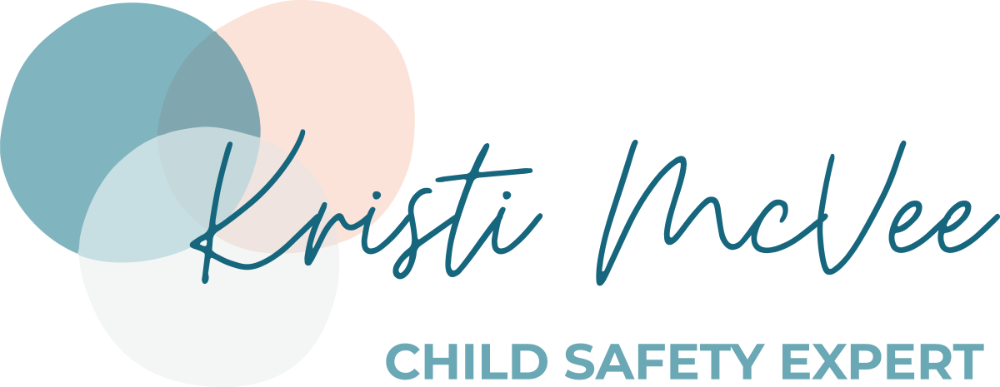Why sexualised behaviours are NOT just 'kids being kids'
Jul 14, 2025
It’s one of the hardest things for a parent or carer to wrap their head around, witnessing a child display sexualised behaviours towards another child. The instinct is to minimise, to explain it away with a nervous laugh and say, “They’re just curious,” or “It’s normal at that age.”
But here’s the truth no one wants to say out loud:
Not all sexualised behaviour between children is innocent. Not all curiosity is safe.
And when we downplay it? When we silence it, ignore it, or brush past it, we miss the chance to intervene, to educate, and to protect.
In fact, we actually do more harm than good when we don't adequately address sexualised behaviours or help our children understand their behaviours in that moment.
Harmless turns to harmful very quickly and it's our jobs to help our kids understand their body safety rights. And even when the behaviour is coming from a place of confusion, not malice, the impact on the child on the receiving end can still be incredibly harmful. Their body autonomy, their safety, and their sense of trust is violated, even if the other child “didn’t know better.”
What are harmful sexualised behaviours?
It’s normal for children to be curious about their bodies, that’s part of healthy development. But there’s a big difference between age-appropriate exploration and harmful, sexualised behaviour that crosses boundaries.
Harmful sexualised behaviours:
-
Involve a significant age or developmental gap between the children. ie. any age gap between the children, especially if the older child is developmentally more advanced and should 'know' better.
-
Are secretive, coercive, or aggressive in nature. ie. forcing, bullying or manipulating the other child to engage in the behaviours eg. forcing them or bribing them to touch their privates.
-
Include sexual acts that go beyond what is typical for the child’s age or stage. eg. any sexualised acts that a child of their age should't display ie. simulating sex, penetrative sexualised play, using mouths on body parts etc.
-
Cause distress, fear, confusion, or discomfort to another child. Note: some children will be ok with sexualised behaviours if they are young and it's not something they are aware is not appropriate. Other children, especially if it's forced will make them upset or uncomfortable. Education is vital in this space to help children understand that these behaviours aren't appropriate.
-
Are repeated, fixated, or show a lack of responsiveness when redirected. ie. the child directing or harming the other child/ren, persists with the harmful behaviours, despite education and intervention.
These aren’t just “naughty” moments. They can be signs that a child has been exposed to something they’re not developmentally ready for, like pornography, abuse, or harmful modelling in their environment.
They can also be signs that a child is struggling with emotional regulation or impulse control and needs extra support.
Knowing what’s typical vs. concerning isn’t about shaming kids. It’s about understanding what they’re showing us and acting quickly and compassionately to protect everyone involved.
Here’s what we need to understand:
Sexualised behaviours between children might stem from:
-
Exposure to pornography or adult content.
-
Abuse or grooming that the child has experienced.
-
A lack of boundaries or healthy modelling.
-
Gaps in supervision, where no one is watching closely enough to step in.
- Curiosity that has escalated beyond developmentally appropriate levels.
This isn’t about blaming parents or carers, but it is about calling us in. Because the hard truth is this: children can and do harm each other when adults aren’t paying attention.
Not out of cruelty. Not even always out of intent. But because they’re exploring in ways they don’t understand, without the tools, language, or limits they desperately need.
Supervision is protection. Not helicoptering, but presence. Active, engaged awareness. Noticing. Interrupting. Educating.
Because when kids are left to their own devices, especially in bedrooms, behind closed doors, or during unstructured play, they will often push boundaries to try and understand the world around them. And when body safety hasn’t been clearly taught, those boundaries can be crossed in ways that leave other children hurt, confused, and impacted for life.
What do we do when we see it?
Protective interruption is stepping in calmly but firmly when something feels off. It’s removing children from the situation without blame or shame, and following up with:
-
Clear body safety education.
-
Gentle conversations to understand what they’ve seen, heard, or experienced.
-
Support for both children, because both may need guidance, context, and care.
This isn’t about punishment, it’s about prevention.
It’s about recognising that all children have the right to be safe and all children also have the responsibility to learn how to respect others’ safety. That’s what body safety education is about. Not fear. Not overreaction. But strong, calm, compassionate protection.
Both children need care in these moments because one may have experienced something they’re now replaying, and the other may be experiencing something they don’t have the words for yet.
You don’t have to get it perfect, just be willing to show up.
If this has happened in your home or care?
Take a breath. You’re not a bad parent or carer. You didn’t fail.
But now is the time to lean in, not look away. To pause, educate, and seek support if needed.
This is where prevention lives, in the uncomfortable, courageous moments where we choose to protect rather than pretend.
Let’s raise kids who know what’s OK, what’s not, and who trust that the adults in their life will help them navigate those murky moments with love, clarity, and fierce protection.
Need support in teaching body safety? Check out my Conversations with Kids Body Safety cards to help you do it in a stress free, supported way for only $11. www.cape-au.com/conversations-with-kids-body-safety


